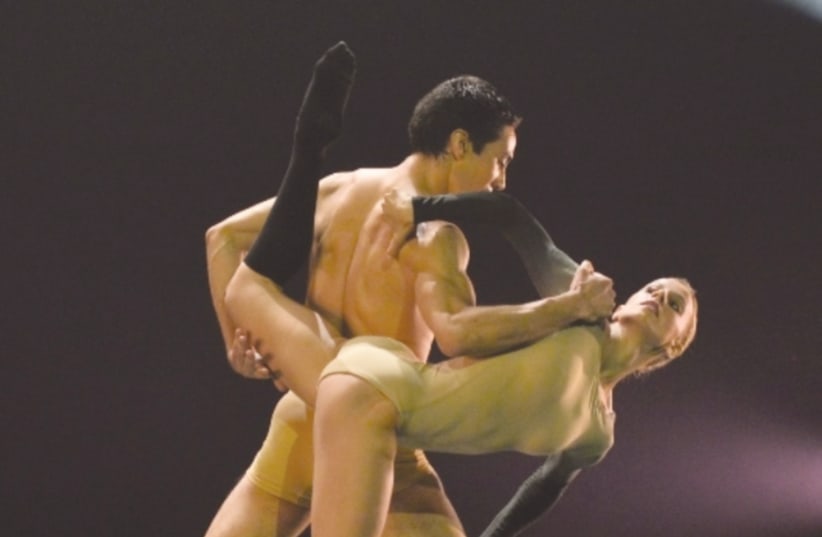Andras Lukacs choreographed a new version in 2012 and he was quoted saying that he approached Ravel’s famous music cautiously, since it was heavily played before, and rightly so. Dozens of choreographers tried, yet they all had to compete with Maurice Bejart’s powerfully sensuous version, dance by to luminaries such as Jorge Donn, Maya Plisetskaya or Sylvie Gillem.
Lukacs missed a chance to break all traditional paradigms in regard to handling the music, which starts slowly, repeating a basic musical phrase and riding on a drum bit, and eventually accumulates masses of inner energy until it reaches a volcanic eruption. Yes, it is about accelerating passion and very suggestive. He opted for pretty compositions, following symmetry, geometrical stage patterns and solid duets.
The company’s dancers were fine, well trained and yet the potentially expressive dance was mildly outdated, very technical and lacked soul. The end result didn’t soar and was under spiced, despite the obvious attempt to create diversity. Instead of climaxed relief, dancers dispersed and left the stage on a low note.
PianoPlays by Laszlo Velekei, set to music by Franz Liszt, was fortunate to have the awarded pianist Janos Balazs playing live on stage.
An enormous bare tree was hanging upside down from the ceiling and became focus of attention. There must’ve been a good artistic reason for that installation, since the world class Israeli light designer Yaron Abulafia, gave it a lot of his attention. His imaginative effects, hinted at the passage of the seasons, which matched in a very subtle way inner landscapes.
With obvious sensitivities, Velekei managed to liven the stage with a group of rather strong dancers, which are classically trained. Obviously, the choreographer identified with it and found no need to rattle the mainstream streams and face the results. Both repertoire choices were safe and very correct – relatively strong on technique, and not so much on distinction.
